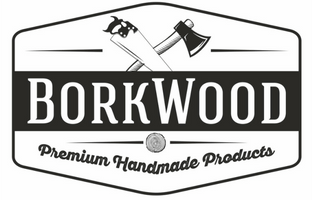The Role of Surveillance Footage in Cases with Personal Injury: What You Need to Know
Surveillance footage from store cameras, traffic cams, or private security systems can be a game-changer in personal injury cases. This article delves into how personal injury attorneys use this evidence to build stronger cases and how victims can ensure they preserve crucial video footage before it disappears or is overwritten.
What is Surveillance Footage in Personal Injury Cases?
Surveillance footage is crucial in personal injury cases, providing visual evidence that can significantly impact a claim’s outcome. This evidence typically consists of video recordings captured by security, dashboards, or smartphones.
Types of Surveillance Footage
In injury cases, surveillance footage can come from various sources:
Security Cameras:
Often found in businesses, parking lots, or public spaces, these cameras can capture accidents as they occur.
Traffic Cameras:
Installed at intersections or along highways, these can document vehicle collisions or pedestrian accidents.
Body-Worn Cameras:
Used by law enforcement or security personnel, these devices can record real-time incidents.
Dashcams:
Increasingly popular in vehicles, dashcams can provide valuable footage of road accidents.
Importance in Legal Proceedings
Surveillance footage can be a game-changer in personal injury cases. It offers an unbiased, visual account of events, which can either support or contradict witness testimonies. This evidence can help establish liability, assess the severity of injuries, and even uncover fraudulent claims.
However, it’s important to note that surveillance footage isn’t always clear-cut. Factors such as camera angle, lighting conditions, and video quality can affect its reliability. Additionally, the admissibility of such evidence in court depends on various legal factors, including how it was obtained and preserved.
How Surveillance Can Be Used to Support or Undermine Claims
Surveillance footage can be a powerful tool in personal injury cases as objective evidence to bolster or challenge a claim. Understanding how this footage is utilized can significantly impact the outcome of your case.
Supporting Your Claim
Video evidence can provide irrefutable proof of an incident, showcasing the exact circumstances that led to your injury. For instance, footage of a slip-and-fall accident in a store can demonstrate hazardous conditions that the property owner failed to address. Additionally, surveillance can capture the immediate aftermath, potentially showing the severity of your injuries and the distress you experienced.
Challenging Your Claim
Conversely, surveillance can also be used to undermine your case. Insurance companies often employ investigators to gather video evidence contradicting your reported injuries. For example, if you claim severe back pain but are caught on camera engaging in strenuous physical activities, it could significantly damage your credibility.
The Importance of Consistency
To protect your claim, it’s crucial to be truthful and consistent in your statements and actions. Remember that surveillance may extend beyond the incident, potentially capturing your daily activities. Ensure that your behavior aligns with your reported injuries and limitations to avoid any discrepancies that could be used against you.
By understanding the dual nature of surveillance in these cases, you can better prepare and protect your claim, increasing your chances of a favorable outcome.
Ethical Considerations With Using Surveillance Footage
Privacy Concerns
The use of surveillance footage in personal injury cases raises important privacy issues. While such evidence can be crucial for establishing facts, it’s essential to consider the implications for individual privacy rights. You should know that capturing footage without consent in certain settings may infringe on personal liberties. Courts often grapple with balancing the need for evidence against protecting privacy, particularly in cases involving sensitive locations or vulnerable individuals.
Potential for Misinterpretation
Another ethical concern is the potential for surveillance footage to be misinterpreted or taken out of context. Video evidence, while seemingly objective, can be subject to various interpretations. Factors such as camera angle, lighting conditions, or incomplete coverage of an incident can lead to skewed perceptions. It’s crucial to approach surveillance footage critically and consider it alongside other evidence to ensure a fair and comprehensive assessment of the situation.
Equitable Access and Use
The ethical use of surveillance footage also involves equitable access and application questions. It would be best to consider whether all parties involved in a personal injury case have equal opportunities to obtain and present such evidence. Disparities in resources or technological capabilities could potentially create an unfair advantage. Additionally, the selective use of surveillance footage raises ethical questions about cherry-picking evidence to support a particular narrative while disregarding contradictory information.
Conclusion
Surveillance footage can be pivotal in personal injury cases, offering objective evidence that may support or challenge claims. As technology advances, its prevalence and importance in legal proceedings will likely increase. Remember that while surveillance can be a powerful tool, it’s not infallible and should be considered alongside other forms of evidence. If you’re involved in a personal injury case, be aware of the potential for surveillance and discuss its implications with your legal counsel. Understanding the role of surveillance footage empowers you to navigate your case more effectively and make informed decisions throughout the legal process.







